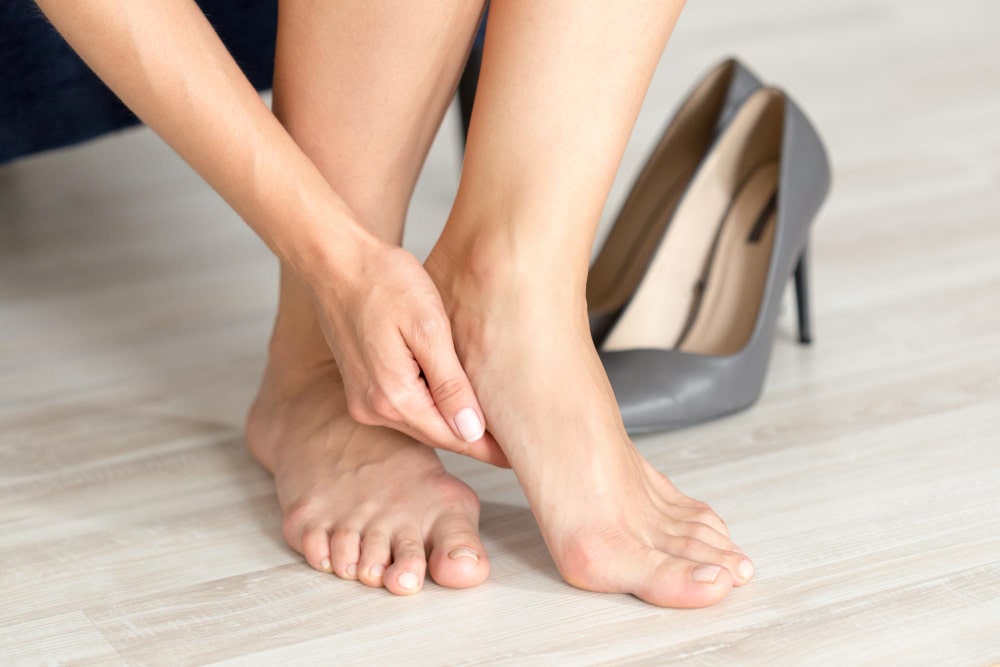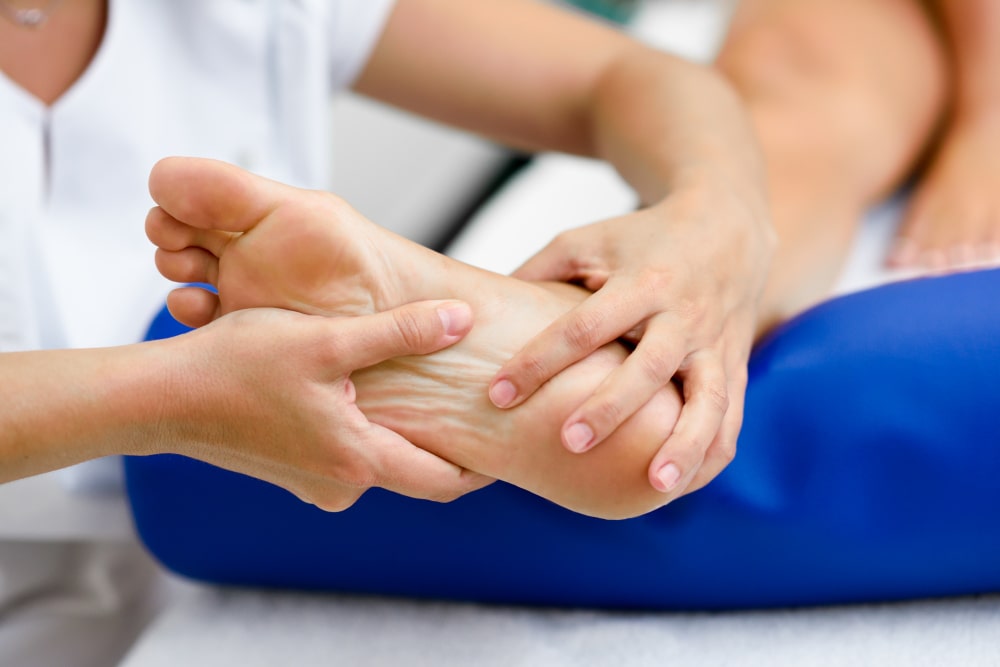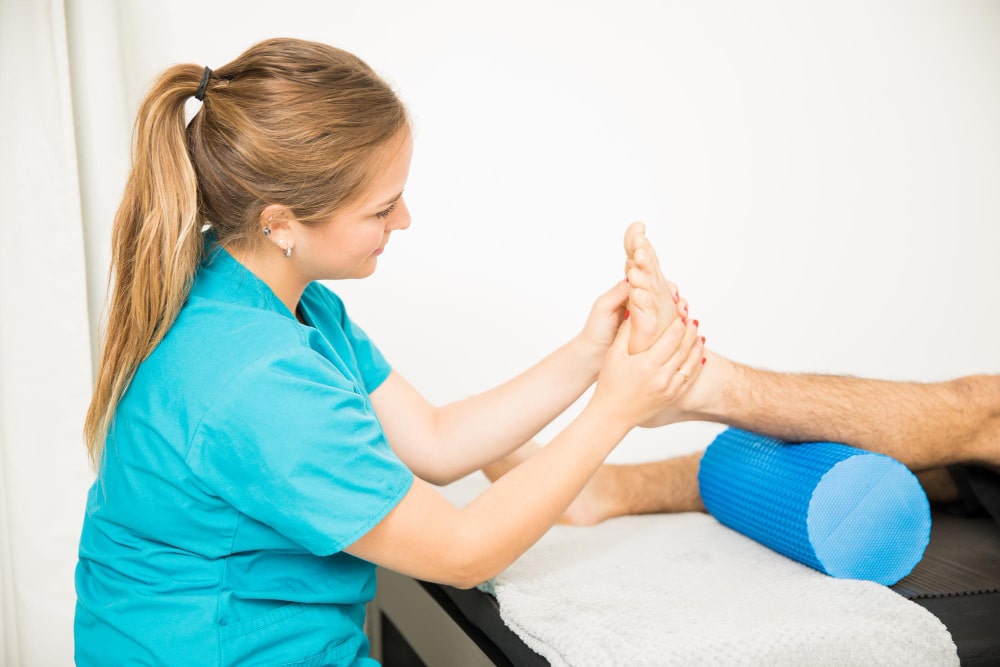Are you experiencing sharp pain in your big toe? If so, you may be suffering from a common foot condition. In this article, we’ll provide an overview of the anatomy of the big toe, identify potential causes of sharp pain in big toe, discuss symptoms associated with it, and outline some treatment options. We’ll also include tips on how to prevent and manage sharp pain in the big toe. So, if you’re looking for more information about this type of foot condition, read on!
Understanding the Anatomy of the Big Toe
The big toe is an essential part of the human body that helps us to walk, run and move around. It consists of three bones (phalanges) connected by muscles and ligaments. The first two bones, the proximal phalanx and the middle phalanx are connected by a joint known as the metatarsophalangeal joint (MTP). This is a very important joint in the big toe that allows for flexibility and range of motion. The third bone, the distal phalanx, does not move much compared to the other two bones. It also protects the end of the toe from injury and damage. Other structures that make up the big toe include tendons, nerves, blood vessels, and skin.

Read More: Elbow Pain When Lifting: What Causes It, How to Treat It?
What are some common sharp pain in the big toe?
Sharp pain in the big toe can cause by a variety of conditions or injuries to this area. It can range from mild to severe. Common causes of sharp pain in the big toe include:
- Gout
- Bunions
- Ingrown Toenails
- Turf Toe
Gout
A gout is a form of arthritis caused by too much uric acid in the body, which leads to inflammation and swelling in joints. The most common joint affected by gout is the big toe, which can cause intense pain and tenderness.
Bunions
Bunions are a common deformity of the big toe caused by years of abnormal pressure put on the joint. This results in a bony bump at the base of the big toe, which may cause sharp pain and limit movement of the toe.
Ingrown Toenails
Ingrown toenails occur when the edges of a toenail grow into the skin of the toe, causing irritation and inflammation. This condition can be painful and may cause sharp pain in the big toe if left untreated for an extended period of time.
Read More: How to Relieve Hip Pain While Sleeping: Best Sleeping Ideas
Turf Toe
Turf toe is an injury that occurs when the big toe is overstretched or bent too far back, which causes damage to the tendons and ligaments. It is a form of sprained big toe caused by repetitive pushing off with the foot while walking or running. This can cause sudden, sharp aches in the big toe and other symptoms such as swelling, limited range of motion, and difficulty walking or running.
Symptoms Associated with Sharp Pain in the Big Toe
Sharp pain in your big toe may be accompanied by other symptoms, including:
- Swelling and redness in the area
- Limited range of motion in the toe
- Difficulty walking or running due to pain
Diagnosing the Underlying Cause
If you are experiencing sharp pain in your big toe, it is important to speak with a healthcare provider to diagnose the underlying cause accurately. Your doctor will likely perform a physical examination and may order additional tests, such as X-rays or imaging scans, to help with the diagnosis. They may also order laboratory tests to check for signs of infection or inflammation in the area.
Read More: Tragus Piercing Pain: What You Need to Know
Treatment Options for Sharp Pain in the Big Toe

The best treatment option for sharp pain in the big toe depends on the underlying cause. Some common treatments include:
Medication
Your doctor may prescribe medications, such as nonsteroidal anti-inflammatory drugs (NSAIDs), to reduce inflammation and pain. They may also prescribe antibiotics if an infection is present.
Rest and Ice
Resting the toe and applying ice can help reduce swelling, stiffness, and pain in the area.
Physical Therapy
Physical therapy can help to strengthen the muscles and ligaments in the area, as well as improve flexibility. This may help reduce pain and improve the function of the toe.
Footwear Modifications
Your doctor may recommend wearing shoes with a wide, deep toe box that provides plenty of room for your toes and allow them to move freely. Additionally, they may recommend wearing orthotics to offload pressure from the toe.
Read More: Hip Pain After Running: What Causes It, How to Relief It?
Surgical Intervention
In some cases, surgery may require if other treatment options have not been successful. This is usually done to correct a deformity or relieve pain and restore the function of the big toe.
How can I prevent sharp pain in my big toe?
The best way to prevent sharp pain in the big toe is to take proactive steps to maintain foot health. This includes:
Wearing Proper Footwear
It is important to wear supportive and comfortable shoes that provide enough room for your toes. Avoid wearing high heels or shoes with a narrow toe box, which can put unnecessary pressure on your toes.
Maintaining a Healthy Weight
Being overweight or obese adds extra stress to the joints, which can lead to pain and inflammation. Eating a healthy diet and exercising regularly can help you maintain a healthy weight.
Read More: Burning Pain in Shoulder: What Causes It, How to Prevent It?
Regular Foot Care
It is important to keep your feet clean and dry, especially between the toes. Trimming your toenails regularly and keeping them filed can help prevent ingrown toenails. Additionally, it is important to check your feet daily for any signs of injury or infection.
When to Seek Medical Attention

If you are experiencing sharp pain in your big toe that does not go away with rest and home treatment measures, it is important to seek medical attention. It is also important to contact your healthcare provider if you experience any signs of infection, such as redness, warmth, or drainage from the area.
It is always best to take steps to prevent pain and injury in the big toe by wearing proper footwear and maintaining a healthy weight. When symptoms do occur, seeking treatment as soon as possible is important to help avoid further damage to the area. With the proper diagnosis and treatment, you can reduce pain and improve the function of your big toe.
Read More: 10 Best Ways For Tooth Abscess Pain Relief Fast: Quick Comfort
Conclusion
In conclusion, sharp pain in the big toe can cause by a variety of conditions or injuries. Common causes include gout, bunions, ingrown toenails, and turf toe. It is important to take proactive steps to maintain foot health, such as wearing proper footwear and maintaining a healthy weight. When symptoms do occur, seeking treatment as soon as possible is important to help avoid further damage to the area. With the proper diagnosis and treatment, you can reduce pain and improve the function of your big toe. It is always best to contact a healthcare provider promptly if you are experiencing any persistent symptoms or signs of infection. Taking these steps can help prevent injuries and maintain overall foot health.
FAQs
Exercise can help to strengthen the muscles and ligaments in the area, as well as improve flexibility. This may help reduce pain and improve the function of the toe. They can help to develop an appropriate plan that fits your individual needs.
Yes, wearing orthotics can help to offload pressure from the toe and reduce pain. Your doctor may recommend wearing shoes with a wide, deep toe box that provides plenty of room for your toes, along with orthotics. This can help to reduce symptoms associated with sharp aches in the big toe.
Yes, there are some treatments that can be done at home to help manage sharp pain in the big toe. This may include rest and ice, over-the-counter medications for pain relief, stretching exercises, and using a foot soak or Epsom salt bath.
Yes, arthritis can cause pain, inflammation, and stiffness in the joints of the feet. This may lead to sharp pain in the big toe as well as other areas of the foot. They can help diagnose and treat any underlying conditions, such as arthritis.
Yes, injuries such as turf toe or sprains can cause sharp pain in the big toe. It is important to seek medical attention if you suspect an injury or experience any signs of infection, such as redness, warmth, or drainage from the area. Treatment may include rest and ice, medications to reduce pain and inflammation, physical therapy, and in some cases, surgery.

